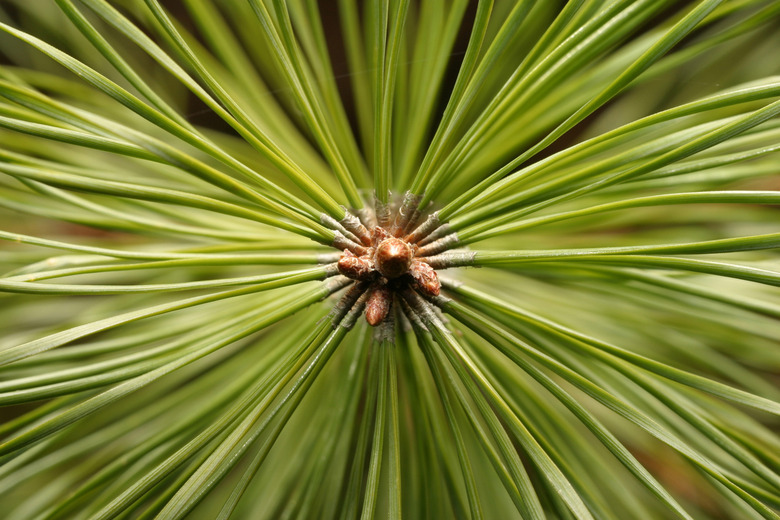My Mugo Pines Are Dying
Native to high-altitude locations in Central Europe, mugo pines (Pinus mugo) are short, bushy plants with clusters of long needles. Hardy through U.S. Department of Agriculture plant hardiness zones 2 through 7, Mugo pines are often used in urban landscaping and are prized for their adaptability to city life. However, several conditions can affect the appearance of mugo pines to the extent that you may be concerned that your tree is dying.
Step 1
Insect pests that routinely attack mugo pines include spider mites, scale insects and sawflies. Spider mites can be treated by spraying the affected plants with a strong stream of clean water. Although sawflies will generally not kill your mugo pine trees, they will cause quick and alarming defoliation. Natural enemies and cultural controls generally keep sawflies away. Destroy all needles with white-yellow eggs and avoid wounding the tree. Keeping mugo pines healthy is the best defense against insect pests.
Underwatering and Edema
Step 1
Mugo pine trees that appear to be on the verge of dying are often suffering from a general lack of water. If you notice that the ends of your mugo pine's needles are turning brown, it's possible it is suffering a reaction from prolonged drought conditions. Providing the tree with regular water will usually prevent its death. Conversely, the tree may be experiencing a condition known as edema if its roots have been standing in water for any length of time. Signs of edema in mugo pines are yellowing and brown branches and needles as well as dead roots.
Step 2
- Insect pests that routinely attack mugo pines include spider mites, scale insects and sawflies.
- Although sawflies will generally not kill your mugo pine trees, they will cause quick and alarming defoliation.
Fungal Issues
Step 1
Two major fungal diseases plague mugo pines. Diplodia tip blight can be identified by the cankers it causes along the branches of the tree and can cause branches to turn brown at the ends. Dothistroma needle blight begins near the bottom of the tree and causes both branches and needles to turn reddish-brown. Proper cultural care and application of fungicides can help keep these conditions at bay. Remove all affected cones and twigs from the area. Three applications of copper-bases systemic fungicide may help control fungal blight. The first application should take place just prior to bud break with the other two following in 10-day intervals. A 4-4-50 Bordeaux mixture is recommended for combating Diplodia tip blight. An 8-8-100 Bordeaux mixture is most effective on Dothistroma needle blight and should be applied during early June. Apply again when new needles begin to emerge and once more three to four weeks later for complete control.
Step 2
- Two major fungal diseases plague mugo pines.
- Three applications of copper-bases systemic fungicide may help control fungal blight.
Fertilizer Burn
Step 1
Fertilizer burn is known to adversely affect the health of mugo pines. Overuse of commercial fertilizers can result in excess salts in the soil that can prohibit tree growth. The major sign of fertilizer burn is yellowing around the edges of the branches. Slow-release fertilizers applied during early spring before new growth begins is the best way to guard against fertilizer burn in mugo pines. Selecting a fertilizer that includes iron will help mugo pine needles retain their fresh green color. It is best not to fertilize young trees at all since their roots are highly vulnerable. After the trees are 2 years old, apply 2 to 4 pounds of 10-10-10 fertilizer per 100 square feet.
Step 2
- Fertilizer burn is known to adversely affect the health of mugo pines.
- Slow-release fertilizers applied during early spring before new growth begins is the best way to guard against fertilizer burn in mugo pines.
References
- NC State University College of Agriculture and Life Sciences: Using Pines in the Landscape
- New Mexico State University: Southwest Yard & Garden Archives: Dying Mugo pines
- University of Illionois Extension: Mugo Pine
- U.S. Department of Agriculture Forest Service: Diplodia Blight of Pines
- Michigan State University and Extension: Identification and Management of European Pine Sawfly
